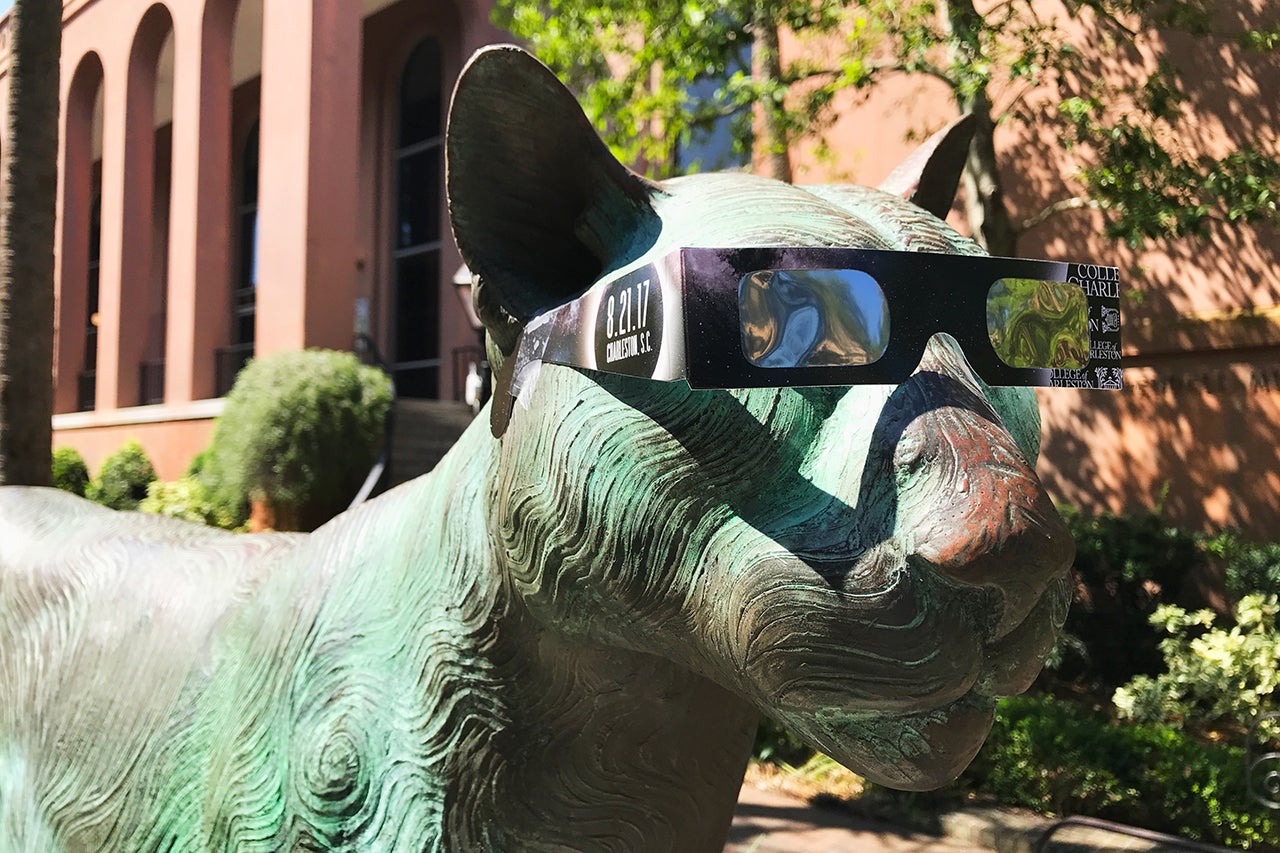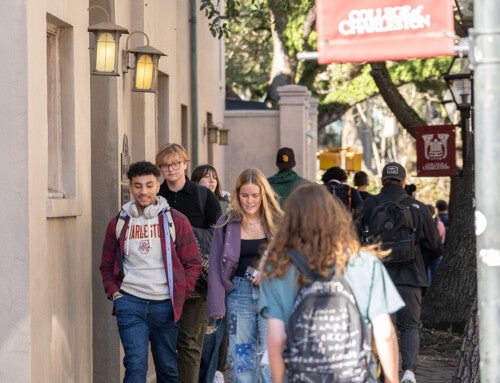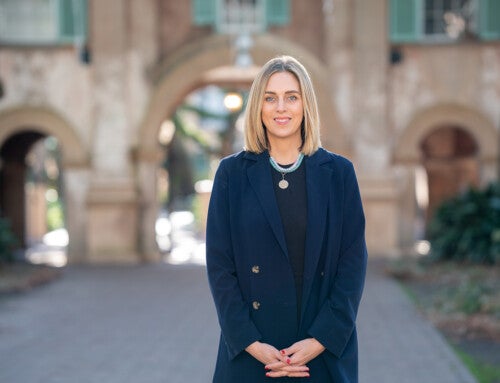An event not seen at the College of Charleston in more than 40 years is almost upon us.
That’s right, in just a few days — on Monday, Aug. 21, 2017 — the moon will traverse the sun in the skies over Charleston for the first time since 1970. The total solar eclipse, which will darken the Holy City at precisely 2:46 p.m., will be a truly once-in-a-lifetime event for students, faculty, staff and members of the Lowcountry at large. But if you want to enjoy the celestial phenomenon to the fullest, you better have a plan. Here are some answers to some common questions about the eclipse:
What is a solar eclipse?
A solar eclipse is an astrological event where the moon passes in front of the sun and casts its shadow onto Earth. A total solar eclipse — the eclipse that will pass from Oregon to South Carolina on Aug. 21, 2017 — occurs when the sun, moon and earth are in a direct line. During a total solar eclipse, only a small swatch of the Earth experiences eclipse conditions, including night-like darkness. A CofC alumnus who saw the last eclipse, on May 7, 1970, said the skies at totality reminded him of dusk.
When is the eclipse?
While the totality — when the sun is completely blocked out by the moon — will only last from 2:46 p.m. to 2:48 p.m., the sun will be in a partial eclipse for nearly three hours that afternoon. The moon will begin to pass in front of the sun at 1:16 p.m., and the lunar shadow will grow over the next 1 1/2 hours. After the totality ends, the lunar shadow begin leaving the sun, with the skies returning to normal a few seconds before 4:09 p.m.
 How do I watch the eclipse safely?
How do I watch the eclipse safely?
To view the eclipse safely, you should wear the glasses while the moon is passing in front of the sun. Once the moon completely blocks the light of the sun, it is safe to temporarily remove the glasses in order to see the total solar eclipse. When the moon begins to move away from the sun, and the edges start to brighten, you should immediately put on your glasses to continue watching.
If you’re a student, faculty or staff at the College, be sure to get a free pair of custom-designed eclipse glasses. They will be available throughout campus beginning Aug. 16.
RELATED: See a full list of eclipse glasses pickup locations
If you’re not a member of the campus community, be sure to visit the American Astronomical Society’s website for a list of reputable eclipse glasses vendors (some stores will also be stocking them.)
If you cannot get a set of glasses in time, you are not out of luck. College of Charleston professor Terry Richardson has created a do-it-yourself eclipse viewer that will let you safely watch.
Where can I watch the eclipse?
If you’re a student, faculty or staff at the College, your Cougar Card is the ticket to one of the best eclipse parties this side of the sun. Members of the campus community are invited to a viewing party in Rivers Green, behind Addlestone Library, from 1:30 p.m. to 3:30 p.m. Attendees will have access to clear skies, refreshments, displays, expert commentary — and a peek at NASA TV’s eclipse broadcast headquarters. Be sure to get there early, though; attendance is capped at 1,500 people.
If you’re not a current member of the campus community, you’ll still be able to see the eclipse. Locations throughout the Lowcountry — including alumni-owned Holy City Brewery, which is unveiling two eclipse-themed beers for the occasion — will be hosting events for the eclipse, including several that will have CofC faculty on hand to answer questions and give presentations.
Where should I go if I want to learn more about the eclipse?
Addlestone Library will be a great place to learn more about the heavens and Monday’s solar eclipse. NASA will be bringing its Hyperwall display to the library this week for demonstrations, and experts from across campus and the country at large will be on hand for speaking engagements and exhibitions.
 Is it safe to take photos of the eclipse?
Is it safe to take photos of the eclipse?
This one is a little more difficult to answer. If you’re using a smartphone, you can likely snap a picture of the sun with little damage to your phone — but it’s unlikely the photo will turn out very well. In a pinch, you can even use your eclipse glasses as a filter for the photo. Repeated exposures — or attempts to shoot with a high-end camera — could harm both your camera and your eyes unless you’ve already purchased special filters for the occasion. So, while sharing everything is great, the eclipse may just be one event that you witness, rather than capture.
Will the eclipse affect my day?
Definitely. South Carolina, a state with 4.9 million people, is expected to grow by an additional million people the day of the eclipse. That’s more than one-fifth of the state’s current population!
Even if you’re not stopping your day to watch this once-in-a-lifetime event, you should expect congested roadways, extra-packed beaches, no vacancy signs abound, booked-up restaurants and lots of people looking up the heavens.
What if it’s cloudy?
With any luck, Charleston will have clear blue skies for the eclipse, but even in the event of heavy clouds, there will be something to see. The sky will still go dark at 2:46 p.m.




